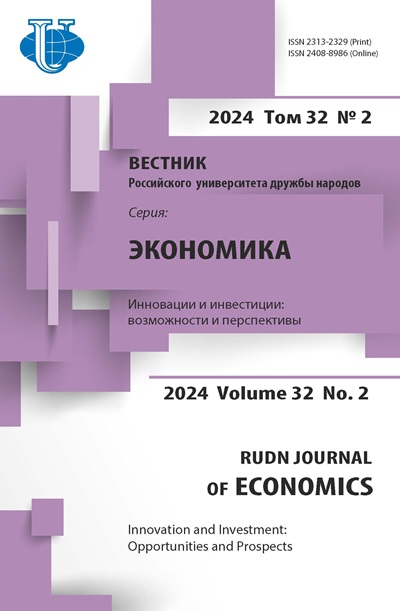From social assistance to social activism: a new look at solving the problems of the poorest segments of the population
- Authors: Sokolova MI1
-
Affiliations:
- Moscow State Institute of International Relations (University) of the MFA of Russia
- Issue: Vol 26, No 3 (2018)
- Pages: 366-378
- Section: ECONOMIC GROWTH AND SOCIO-ECONOMIC DEVELOPMENT
- URL: https://journals.rudn.ru/economics/article/view/20293
- DOI: https://doi.org/10.22363/2313-2329-2018-26-3-366-378
Cite item
Full Text
Abstract
One of the global problems of mankind for many years is the problem of poverty. Despite the efforts of the world community to combat poverty and underdevelopment on our planet, progress has not been encouraging: the rich continue to become richer and the poor become even poorer. Segmentation of the population of our planet by income drop, conducted by experts from various organizations (UN, IFC, World Bank and others), leads to the conclusion that the poorest segments of the population (“bottom of the economic pyramid”) form more than half of the consumer market in developing countries. With the growth rates in these countries, and this trend exists, the purchasing power of these people should also increase. The low economic activity of people with low incomes is explained by different reasons, but the segment itself is not fully studied either in a single country or in the world as a whole. The reorientation of the activities of large TNCs and business enterprises on implementation of projects in the segment of “the bottom of the economic pyramid” will allow you to get out of poverty for millions of people around the world. Social and ethical marketing and business, taking into account this concept, will significantly reduce the number of people with low income, bringing to a new level of consumption.
About the authors
M I Sokolova
Moscow State Institute of International Relations (University) of the MFA of Russia
Author for correspondence.
Email: mar-sok@mail.ru
Candidate of Economic Sciences, Professor of the Department of Management, Marketing and Foreign Economic Activities of Moscow State Institute of International Relations (MGIMO University)
76 Prospeсt Vernadskogo, Moscow, 119454, Russian FederationReferences
- Dementieva A.G., Sokolov M.I. (2006). Upravlenie chelovecheskimi resursami. Moscow: Prospect Publ., 238. (In Russ.)
- Mal’tus T.R. (1895). Opyt zakona o narodonaselenii. Moscow, 150. (In Russ.)
- Marks K. (2001). Kapital. Vol. 1. Moscow: ATS Publ., 564. (In Russ.)
- Prudon P.Zh. (1908). Bednost’ kak ehkonomicheskij princip. Moscow: Posrednik Publ., 29. (In Russ.)
- Reklyu E.H. (2011). Bogatstvo i nishcheta. Moscow: Librokom Publ., 64. (In Russ.)
- Rikardo D. (1929). Nachala politicheskoj ehkonomii i podatnogo oblozheniya. Available at: https://www. livelib.ru/book/1001070604-nachala-politicheskoj-ekonomii-i-podatnogo-oblozheniya-davidrikardo (In Russ.)
- Rybakov R.P., Rybakov A.I. (2015). Bednost kak sotsialnij fenomen: monograph. Moscow: RUSYNS Publ., 136. (In Russ.)
- Smit A. (2017). Issledovaniya o prirode i prichinah bogatstva narodov. Moscow: Eksmo Publ., 1059. (In Russ.)
- Sokolova M.I. (2006). Korporativnaya strategiya i korporativnoe upravlenie. Upravlenie korporativnimi finansami, (4), 10—15. (In Russ.)
- Spenser G. (2013). Social’naya statika. Izlozhenie social’nyh zakonov, obuslavlivayushchih schast’e chelovechestva. Kiev: Gama-Print Publ., 496. (In Russ.)
- Hajek F.A. (1992). Pagubnaya samonadeyannost’: oshibki socializma. Moscow: Novosti Publ., 304. (In Russ.)
- Karnani A. (2007). The world of Marketing at the Bottom of the Pyramid California Management Review, 30.
- Prahalad C.K., Stuart L. Hart. (2002). The fortune at the bottom of the economic pyramid. Strategy + business, (26), 14.
- Prahalad C.K. (2010). The fortune at the bottom of the pyramid. Pearson Education, 497.
- Rowntree B.S. (1901). Poverty: a study in town life. Macmillian and Co., 305.















